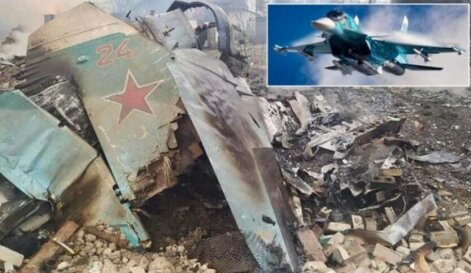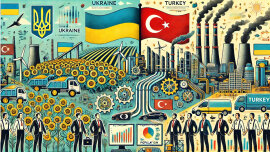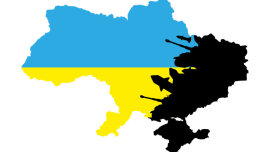A recent report from Singapore's ISEAS Institute for Southeast Asian Studies suggests that Russia's invasion of Ukraine has done incredible damage to the reputation of Russian defense technology in Southeast Asia, which was once a source of significant income for it.
81 days of an extremely fruitless invasion of Ukraine for the Russian Federation significantly affected the global arms market for the next 20–25 years.
In the short term, the Russian Federation has the opportunity to lose a significant part of its share in the arms market, and its place may be taken by high-tech manufacturers from the United States, Great Britain, India or even North Korea, which may try to enter the regional market, since it produces Soviet-era weapons and ammunition.
The largest military operations in Europe since the Second World War enable consumers of military products, in combat conditions, to evaluate all the advantages and disadvantages of military equipment from various countries and manufacturers. At the same time, in their assessment, they do not rely solely on various marketing tricks of military equipment sellers, in the form of beautiful graphic videos shamelessly praising their goods.
No matter how cynical it may sound, but the war in Ukraine is an online test of all the characteristics of modern heavy, small arms and other high-tech weapons.
Already now it can be argued that the time of military equipment from the times of the Soviet Union, although modernized, is definitely starting to become a thing of the past.
On April 7, over Ukraine, an anti-aircraft missile shot down one of the most advanced Russian multi-role fighters Su-35 generation 4 ++, worth about $ 100 million (according to NATO codification: Flanker-E +), which was actively considered by Vietnam for purchase.
On April 14, in the Black Sea, the Ukrainian military sank the missile cruiser Moskva using anti-ship cruise missiles, earning it the dubious honor of being the largest naval ship destroyed since World War II.
It is important to note that Russian equipment destroyed in Ukraine includes tanks used by Vietnam and Laos, infantry fighting vehicles and armored personnel carriers used by Indonesia, and combat attack and transport helicopters used by several Southeast Asian countries.
Numerous photographs and videos of broken Russian equipment cast doubt on its quality and reliability.
Many potential buyers of Russian technology begin to have legitimate doubts about the need for such acquisitions.
For the past 20 years, Russia has been the largest arms exporter to Southeast Asia, where Vietnam, Myanmar, Malaysia and Indonesia are key consumers.
Between 2000 and 2021, Russian arms exports to the region amounted to $10.87 billion.
• USA - $8.4 billion;
• France - $4.3 billion;
• Germany - $2.94 billion;
• China - $2.9 billion.
The key advantage of the Russian Federation over other countries is the price and terms of payment.
Russia offers for sale to these countries the entire range of military equipment, from fighter jets and submarines to tanks and small arms. In addition, Russian defense companies are ready to accept partial payment in goods, engage in joint production and, unlike the United States and European countries, do not take into account the human rights situation in the country when selling weapons.
Economic sanctions, as well as export controls imposed by the United States, Europe and Asia, will make it difficult for Russian defense enterprises to conduct financial transactions, including receiving payments from foreign customers, and will also limit its access to technologies crucial for the production of modern military equipment, which the Russian Federation itself does not produce and cannot easily purchase in other countries (semiconductors, microelectronics, machine tools and software).
This will affect not only the production of military equipment for use by the Russian armed forces and foreign buyers, but also the supply of spare parts, ammunition and upgrade packages to existing customers.
The supply of spare parts has been an important source of income for the Russian Federation, especially considering the higher level of service that Russian equipment requires compared to Western counterparts.
Not so long ago, Indonesia has already expressed its dissatisfaction with the quality of maintenance, repair and overhaul of Russian equipment, especially the Su-30.
Such significant "inconveniences" will force foreign buyers to switch to more reliable sources of military equipment.
What should Ukraine do?
In our information campaign, we should not lose sight of the countries of Southeast Asia and, in particular, Vietnam, Myanmar, Indonesia and Malaysia.
All photo and video materials with the moments of the destruction of Russian military equipment in Ukraine must be translated into the languages of these countries (or at least have English subtitles) and thrown into their information space.
What will it give?
The influx of such materials should finally shake confidence in Russian military equipment and force clients in Southeast Asia to refuse to renew old defense contracts and enter into new ones.
In turn, this will deprive the Russian Federation of foreign exchange earnings, negatively affect all enterprises of the Russian defense industry without exception, with the subsequent dismissal of employees and, ultimately, their closure.

























